Climbing a high mountain produces scant adrenaline and offers little in the way of thrills. Instead it’s all about discomfort;
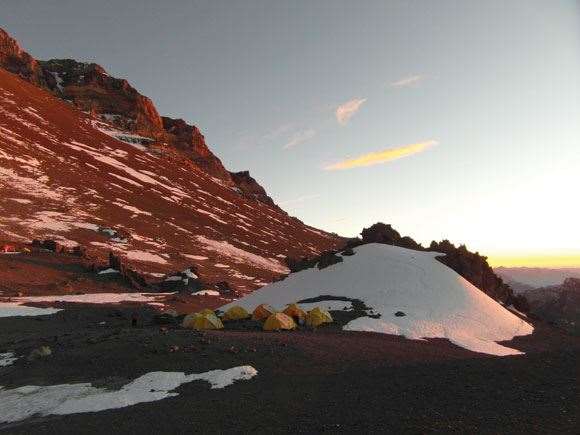 photos by AARON SCOTT
photos by AARON SCOTTClimbing a high mountain produces scant adrenaline and offers little in the way of thrills. Instead it’s all about discomfort;
Maybe it’s the spectre of rock falls or frostbitten digits or a gasping, frozen death, but most people figure high-altitude mountain climbing to be a pursuit peopled by wild-haired adrenaline junkies and wide-eyed thrill seekers. An extreme sport, right? In fact, it’s anything but. Climbing a high mountain produces scant adrenaline and offers little in the way of thrills. Instead it’s all about discomfort; all about shouldering a load of discomfort that grows exponentially heavier the higher you go. I can say this with some authority because recently I sought to climb Argentina’s Cerro Aconcagua, at 6962m the highest mountain in the Americas, indeed the highest peak in the world outside the Himalayas. And, believe me, it got very uncomfortable.
Aconcagua may not have the heft of the great Himalayan peaks, or the elegance of the famed European Alps, or even the mystique of the fabled Kilimanjaro, but this is a serious mountain. Sitting at the heart of the high Andes, straddling the Argentinean-Chilean border, on a latitude roughly analogous to Sydney, Aconcagua is a vast slab of prehistoric seafloor that was thrust into the troposphere when the Nazca Plate crashed into the South American Plate 60-odd million years ago. It’s a monstrous lump of uplifted rock whose appearance is largely dictated by the horrid Andean winds. The southern face of the mountain, which bears the brunt of the Antarctic winds that roar across the southern reaches of the Pacific before raking the Patagonian glaciers, is covered by shimmering pillows of snow and overhanging walls of bluish ice. It is, quite frankly, a terrifying sight. Climbing up this face is a fiendishly difficult task, requiring ice axes and ropes and all kinds of specialised alpine skills I don’t possess.
The western face of the mountain, by contrast, opens onto the warmer winds that tumble across the Pacific, and is almost completely free of snow and ice. This face presents great sweeps of brown scree broken by immense, pillared walls of sandstone. It looks like the monumental backdrop to a spaghetti western. In the evenings it glows a deep crimson against the setting sun. The guides call this effect “Aconcagua on fire” but to my eyes it looks more like the mountain is covered in blood. Climbing this side of the mountain is, in a technical sense, a straightforward affair. There’s no call for axes or ropes or an intricate understanding of crampons. All that’s needed, according to Aconcagua Expeditions, the company I book my expedition through, is adequate gear, a high level of physical fitness, and a good run of weather. This is the side of the mountain I plan to tackle.
I meet the other members of my expedition in the air-conditioned lobby of a three-star hotel in the Argentinean wine capital, Mendoza. There are four guides and 13 paying customers. The four guides, headed by a long-haired 28-year-old named Martin, are all local Mendocinos and all look furiously fit. They’ll lead four to five expeditions each season, which means that a greenhorn like Martin has still been to the summit around 30 times. He examines the paying customers with a wry smile. No doubt we’re an eclectic bunch. There are three women and ten men, the oldest of whom is 68, the youngest 23. There’s a Spaniard, a Swiss, a Swede, a Chilean, a Colombian, a German, an Indian, an Englishman. There’s Brad, a bearded Kiwi, who admits he’s already stopped showering in preparation for the mountain. There’s Leandro, a grinning Argentinean, who proudly announces his wife is currently seven months pregnant. And there’s Ben, my designated tent mate, an Essendon fan with a penchant for jiu-jitsu, kung fu and amateur boxing.
We all shake hands awkwardly and scratch about for conversation. “So, uh, what other mountains have you climbed?” Many of us have climbed Kilimanjaro, a few have climbed Mont Blanc, several have done the Inca Trail. None of us have gone above 6000m. I find myself looking around, examining the faces, scanning the bodies, trying to work out who’ll be the first to drop. Although percentage figures are sketchy (most guiding companies remain coy on their summit rates), the majority of climbers don’t reach the top. Shifting eyes suggest others are making their own quiet assessments. I wonder if anyone’s tagged me as the first to fall ...
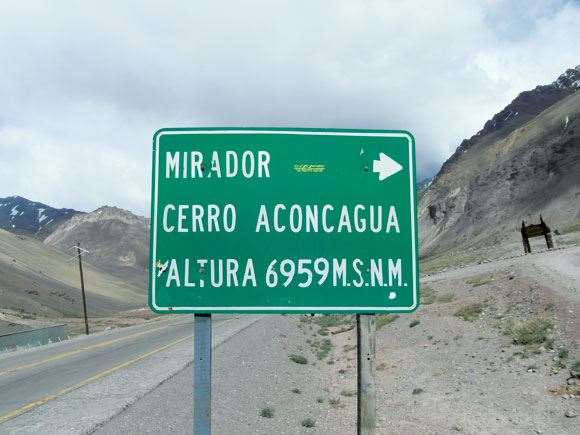 photos by AARON SCOTT
photos by AARON SCOTTMartin has our expedition planned to the minute. We will approach the mountain slowly, carefully. We’ll advance from the south, spending two nights at pre-base camp (3300m). From there, we’ll walk clockwise around the mountain until we reach base camp, Plaza de Mulas (4300m), at the foot of the western face. We’ll spend four days here: two practice climbs and two rest days. We’ll spend this time feeling the mountain out, fortifying our lungs against the thin air. We’ll eat elephantine portions of food and drink camel-like quantities of water. Then, with our bodies hardened to the task, we’ll make a three-day dash for the summit, skipping in one-night leaps across the three high camps sitting at 4900m, 5400m and 6000m. Effectively, Martin’s plan will see us lay a two-week siege to Aconcagua. We’ll wear down the mountain’s ramparts before making a charge for the city gates.
But, despite all the planning, summiting Aconcagua is a seriously difficult undertaking. The backbone of the high Andes is a hostile strip of Earth; a place where life does not come easy. It’s thought the Incas were the first people to settle this region, sometime in the late 15th Century. The foundations of Incan villages and petrified wood carted on Incan shoulders can still be found in the dry stone valleys that lead up to the base of the mountain. In 1985 an Incan mummy ‒ the foetally crouched body of a seven-year-old boy ‒ was discovered 5300m up the southern face of Aconcagua. I ask Martin, our head guide, how they managed to cart a dead body up a precipitous, ice-covered slope of rock that modern alpinists still find technically challenging. He widens his eyes and shrugs his shoulders. “Incas!” he exclaims brightly.
God knows what the Incas were doing here. Shivering miserably, most likely. Even at the Aconcagua Park gates, sitting at just over 2500m above sea level, the wind is ferocious, the cold downright painful. It’s mid-morning when we file off the minibus at the gates, but already a frigid southerly is bending a line of poplars to the horizontal and filling the valley with a dense grey fog and swirling flecks of snow. In the distance, up the valley, we can see the lower slopes of the southern face of Aconcagua. It’s a spare corridor of land. The only life that seems to flourish is a knee-high bush spined with inch-long, ivory-coloured thorns. The water that tumbles through the valley froths a muddy brown. Martin gathers us in a group and delivers a short pep-talk. “Don’t just focus on the summit, okay? Don’t always be thinking about summit day, summit day. Enjoy every day, okay?” He frowns. “You don’t decide if you get to the summit. The guides don’t decide if you get to the summit. Always, it’s the mountain who decides. Okay?”
Then we set off up the valley – very, very slowly. Bracketed by guides, two at the front,two at the back, we walk at a pace that could be generously described as “ambling”. We step, pause, then step again. Octogenarians move with more purpose. Our duffel bags, bulging with gear, are being taken to camp by a team of mules, so we’re only carrying our featherweight day packs. We creep up the thorned valley, step, pause, step. When we finally arrive at Confluencia, four hours later, we find tables covered in bowls of fruit and platters of cakes. There’s an urn of boiling water, boxes of tea bags, bundles of coffee sachets and jars of hot chocolate. A pair of smooth-skinned waitresses emerges with plates of cheese and bread. As we demolish the supplies, I find myself wondering how this activity can possibly morph into something demanding.
But that evening, I see the direction things are heading. When the sun dips below the stone walls of the valley, a stinging chill settles. The wind picks up, whistling through the thorn bushes and spraying the camp with a fine spindrift. When we gather for dinner, most of the group is kitted in double gloves and down jackets. My feet are already numb inside two pairs of woollen socks and my Goretex-lined boots. How Incan shepherds – garbed in leather sandals and alpaca shawls – survived this sort of cold is anyone’s guess. After we’ve eaten, Brad, the Kiwi, ducks out to the toilet. A minute later he reappears, grinning nervously. “Um, guys, I think the toilet’s frozen solid.”
By the time the first Europeans ventured this deep into the Andes, they were astonished by the hostility of the place; the doses of deadly discomfort it managed to dole out. When San Martin’s troops drove the Spanish colonialists from Argentina in 1816, General Bartolome Mitre found himself leading a cadre of fighting men through this section of the mountains. He wrote in his diary, “The rarefied air causes such imbalance in the vital dynamism that it may even lead to death. It did cause some casualties among our men. Yet, slow progress, careful steps taken, and a diet based on garlic and onions made it possible for both man and beast to overcome such rough conditions.”
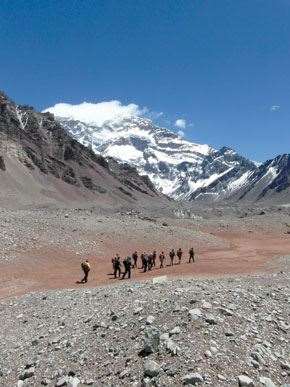 photos by AARON SCOTT
photos by AARON SCOTTIf the cold made itself known at pre-base camp, then the first signs of altitude appear at Plaza de Mulas, 1000m higher up. The walk there is a 20km grind along the immense stone gouge of the Horcones Valley. The thorn bushes disappear, replaced by fields of scree and uplifted strata of rock, stained a sulphurous yellow or coppery green. At points we come on the carcasses offallen mules, the bones picked clean by condors. There’s the eerie sense of the mountains closing in around us. We all feel it except Leandro, the sole Argentinean climber, who wanders along singing opera at full volume.
Base camp sprawls across the head of the valley in a grey cup of glacial moraine bounded on three sides by sheer walls of rock. It’s an odd, scruffy place. Hot showers can be had for $10, internet can be checked for $1 a minute, but filthy climbers wander aimlessly, packing and repacking their kit, tying and retying their crampons, drinking endless cups of tea, and casting sidelong glances at Aconcagua to the east. The summit ridge is clearly visible, three kilometres above. In the rarefied air it looks as if it could be reached in an afternoon’s walking. We arrive at base camp to find more tables laden with obscene amounts of food and drink. All of us descend on the tables, with the exception of Leandro, who stumbles off to his tent, clutching his forehead, his face a burning red.
I shake my head and laugh, but two days later, after an acclimatising climb to the peak of Cerro Bonetti, a 5100m cone of scree standing five kilometres from base camp, I’m struck low by altitude. As we plod back into camp, the space behind my forehead suddenly fills with a molten pain. I down three mugs of cordial and the pain abruptly recedes. Half an hour later I stumble out of the toilet, burying the heels of my palms into my eye sockets. The pain has returned with a ferocity that sends flashes of light across my eyelids. I down another three mugs of cordial, then stagger silently to my tent, Leandro’s laughter at my back.
It was only by the end of the 19th Century that alpinists began descending on Aconcagua to stand on the roof of the Americas. In 1883, a 43-year-old Berliner with outstanding facial hair, called Paul Gussfeldt, launched the first attempt at the summit of the mountain. His climbing style was cavalier. After establishing a camp at 5000m on the western face, he dumped his tent, bedding and excess food and, wearing a woollen suit with a silk scarf tied jauntily around his neck, made a headlong dash for the summit. He was within 500m of the peak when an exfoliating southerly stopped him in his tracks. Gussfeldt was a veteran of the European Alps, but he’d never seen a wind like this. Battered and bewildered, he turned around. “Such suffering makes it impossible for any human being to reach the summit,” he later surmised in his journal.
We’re standing in the spot where Gussfeldt likely penned those words. It’s Plaza Canada, the first high camp, a 5000m-high knob of scree partly shaded from the wind by a ragged citadel of rock. We’ve spent the night here and now we’re moving on to Nido de Condores, the second high camp (5500m). We’re fully kitted in our heavy jackets, down mittens, mountain pants, plastic boots, gaiters. The mules go no higher than base camp, so we’re shouldering our own food, our own gear. Our packs weigh 20kg, helmets and sleeping mats tied to the outside. Martin gathers us for another pep talk: “Okay guys, from now on things are going to get harder ... ” We’ll be eating where we sleep, drinking melted snow, shitting in plastic bags. Martin levels his index finger at his temple. “You need to be strong in the mind, yeah? I’m telling you, climbing this mountain is 20 per cent in the body and 80 per cent in the mind.”
I soon discover what he means. At the second high camp, at some dark hour after midnight, I’m woken by the wind battering our tent. I sit up in a blind panic, convinced I’m suffocating, convinced I can’t suck the mountain air into my lungs. In the absolute blackness of night, the only noise the wind whipping the walls of the tent, the fear is horribly claustrophobic. I gape like a landed fish, fighting the terror. Although I suck down lungfuls of air, I can’t dispel the feeling that I’m dying for want of oxygen. I lie in my sleeping bag, sweat on my chest, my feet numb with cold, and stare at the shuddering walls of the tent, suppressing a desperate urge to rush back down to base camp, back where the air is thick.
The next day we wake to find an immense southerly tumbling off the high reaches of the mountain. It’s difficult to describe the dimensions of this wind. It arrives in gusts, rolling down the mountain with a noise like eight-foot surf breaking on a headland, before hitting our camp with a blow that makes my head ache. Walking into this wind is like wading upriver, talking into it is an impossibility, squatting down and relieving yourself into a plastic bag doesn’t bear thinking about. It blows hard for three-straight days.
All this time we sit in our tents. The battery on my iPod dies. I finish my book. I lie in my sleeping bag, watching the minutes tick away, listening to the gusts as they shred the flysheet of our tent. It’s beyond torturous. The boredom magnifies every discomfort. My lips crack and bleed constantly. My wind-burnt hands bubble into blisters that itch relentlessly. My oxygen-starved brain hisses with a persistent ache. My bloated gut knots and then loosens, sending me scuttling outside with a toilet bag every few hours. The tent reeks, the water’s foul, stocks of toilet bags run low. And still the southerly crashes down off the mountain with the noise of breaking surf. Sometime in the afternoon on the third day, my tent-mate Ben props onto his elbow. He stares at me for a handful of seconds, then mutters, “This is fucked, mate. Absolutely fucked.”
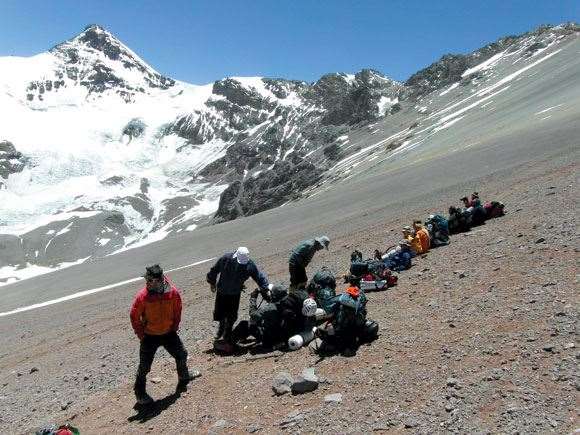 photos by AARON SCOTT
photos by AARON SCOTTThree years after Gussfeldt’s failed shot at Aconcagua’s summit, the Englishman Edward FitzGerald had a crack. His research was impeccable, his organisation meticulous. Following a route similar to the German, FitzGerald moved steadily up the western face of the mountain before establishing a high camp at 6000m. Time and again, he set out from this camp, only to be driven back by the wind, the cold, and his own failing limbs. Finally, his second-in-command, a Swiss called Matthias Zurbriggen, broke ranks and pushed to the summit alone. While Zurbriggen buried his axe on the summit, FitzGerald wallowed in his defeat. “There is no telling how far a man can go,” he wrote in his diary. “Sometimes and for no apparent reason, it is just impossible to go on walking.” When I read this line from FitzGerald’s diary, in the relative opulence of base camp, I was dubious. Surely, with the summit in sight, you could always go on walking? Surely you could keep moving, one foot in front of the other ...
Our summit day begins at four in the morning when Martin gives the call for boiled water. The night is black as ink, the wind is steady, and the cold is something that can’t be put in words. We leave camp at 5:30 sharp. We have to be fully dressed, our packs loaded with helmet, crampons, food. Water will freeze in minutes in our packs, so bottles have to be zipped beneath our down jackets; cameras will freeze even more quickly, so they have to be zipped a layer below the water. Every movement is an ordeal. The smallest act – pulling my boots on, tying my shoe laces, zipping my down jacket – sends me into a breathless crouch.
At 5:30 we gather in the silvery light, our headlamps tracking crazy shapes on the ground. Martin yells his final pep-talk into the wind. “This is the mountain you chose to climb, okay? This is what you came to do. Remember what I said: today is all about the mind.” And then we’re off, in line, at pace, the wind in our faces. I fix my eyes on the boots in front of me and focus on my breathing, in through the nose, out through the mouth. At some point the sun rises. I’m alarmed to find myself in sunlight. I reach to turn off my headlamp and find the battery’s gone dead anyway. I look around at the climbers behind me. Blank ski goggles stare back.
I find I’m forgetting to breathe. A climber above turns and heads back down the mountain. I look at his face as he goes past. Blank goggles stare back. A burning in my lungs tells me I’ve forgotten to breathe again ...
This is how summit day goes. Snatches of lucidity broken by spells of dreamlike action and longer spells of absolute nothingness. I stare at the boots in front of me and concentrate on breathing. It’s all my brain can handle. I see climbers turning and going back. Traversing across a steep pitch of ice-covered scree, Martin tells us to put our crampons on. My hands are useless, my mind dense. It takes me ten minutes to get them out of their zippered bag. It takes me another ten minutes to work the strap through its clasps. After I’ve finally fixed them to my boots I stand, take three steps, and find my right crampon has fallen off. I collapse on a rock and consider weeping.
The final stretch to the summit is a precipitous giants-ladder of jagged rock chunks. It’s here, our group whittled down to a party of five climbers and Martin, that the weather turns. I’m bewildered to find the air about my face grey, flecks of ice hitting my bare cheeks. I’d ask what’s happening, but the wind sweeps conversation away. I look about at our group and find blank ski goggles staring back at me. I focus on the boots in front of me and concentrate on my breathing. But I can’t get the order right. I stumble and find my chest trembling for want of wind. It goes on like this for some amount of time.
Then I find that FitzGerald was right: “Sometimes, and for no apparent reason, it is just impossible to go on walking.” The summit is 60m above me, in plain view through the wind-driven waves of snow, when my body stops working. It’s an astonishing realisation. My legs won’t put my feet where I want them. My feet won’t rest squarely on the ground. I fall. I fall again. I stop, take five deep breaths, channel all my energies, and fall again. Somewhere in my mind I think, “This is what it must feel like to drink a bottle of scotch in a dozen swigs.” I’m in the process of getting to my feet when I fall again. With the other three guides already back down the mountain, Martin shrugs. “Okay, we all turn around.” If I knew what was happening, I might’ve argued.
I can’t remember much from that point on. Apparently the temperature dropped to 30 below. Apparently I was talking gibberish. Apparently I got a shot of adrenaline in my right butt cheek before being tethered to a 20m length of rope and guided down the mountain like a broken mule. Sounds likely. All I know for certain is that if a guide wasn’t up there with me, I would have sat down ona rock and quietly expired, the summit a few dozen metres above me.
The real questions – as my mother asked when she read the first draft of this story – are: why would anyone do this? Where’s the enjoyment? These aren’t easy questions to answer, but I’ll try. Put yourself on the side of a mountain, a huge upward sweep of scree surrounded by a jagged blanket of snow-covered peaks. Take a step, pause, breathe. Take another step. Pause again. Breathe again. This is your pace, moving up the side of the mountain in the tiniest of accretions, the slowest of steps, your boots creaking, your poles chinking on shards of rock. It’s a rare pleasure to concentrate so completely on something as elementary as walking, breathing. Distractions disappear. Time melts away. The views grow wider with each step. It’s a thing of rare beauty. Believe me.
 photos by AARON SCOTT
photos by AARON SCOTT‒ Aaron Scott
Related Articles

Socceroos coach says Argentina can only 'play two ways'
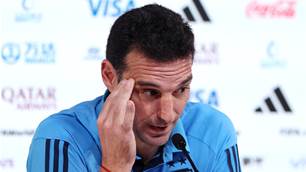
Argentina coach on 'inferior' Socceroos: 'I don't fully agree'













